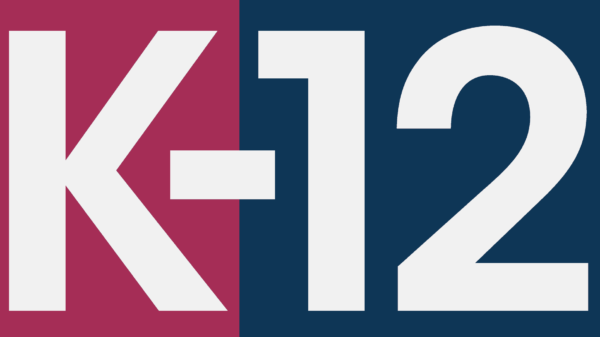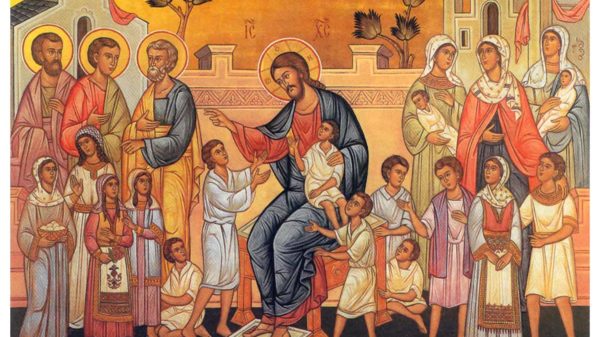The Dark Ages. That’s one of the terms used to describe nearly 1000 years of history-a history that is often hard to understand due to a lack of surviving documents, and often is clouded by myth and legends. Western Europe was under the rule of hundreds of feudal lords and kings. Castles dominated the landscape, and entire cities were built behind protective walls.
The Roman Empire formally legalized Christianity during the 4th century, and soon afterward, the zeal and evangelism of practitioners spread this faith throughout Western Europe as far west as Ireland. The Church would be one of the most powerful medieval institutions, controlling publication of books and the making of laws. Much of medieval Europe’s art and architecture has a direct connection to the Christian church.
Knights, soldiers, peasants and pilgrims marched along European roads and trails during the Crusades and brought back with them stories of differing cultures, and began to adopt their architecture, tales of Romance, and advances in medicine. Trade was both a blessing and curse. Merchants began importing silks, cottons and rare spices from all over the known world. But these ships would also bring the horror that became known as the Black Death. The disease ravaged Asia, before wiping out nearly one-third of Western Europe.
Wars took their toll, from William the Conqueror’s invasion of England in 1066, to the Hundred Year’s War that ended in 1453, there were few years that didn’t see battles raging in some part of Europe. This was an era of siege warfare-catapults, trebuchets, battering rams, and towers. Men fought hand-to-hand in the thousands in bloody conflicts using swords, axes, longbows, crossbows, stones and daggers. Medieval Europe saw some humanity-changing developments, such as Gutenberg’s moveable types press in the middle of the 15th century. This would bring printed material to the masses, and improve communication between societies. Marco Polo would popularize the account of his voyage to the Orient, and intrigue Europeans about this exotic land.
Through these centuries, Europe was slowly waking from a harsh slumber, and begin to sow the seeds of a Renaissance.
Chapters
- 1. Spain
- 2. Italy
- 3. France
- 4. England
- 5. Scotland
- 6. Ireland
- 7. Asia
- 8. Africa
Spain
Medieval Spain was a battlefield where Christians attempted to regain control from the Moors, who had invaded the country before the 8th century. The Moors were intent of conquering all of Western Europe, but they were stopped in the Pyrenees by Charles the Hammer. This defeat left the invaders settling in the lower parts of the country. The early years of Moorish influence in medieval Spain were marked by infighting amongst the Muslim kingdoms. The Basques, who were traditionally fiercely independent, sided with French forces to expel the Moors.
The Moors’ influence on Spain during the Middle Ages is still very evident. More than 4,000 words of Arabic origin are used in modern Spanish. Moorish architecture can be found throughout Spain, with its slender columns, horseshoe arches, cupolas, and airy, colorful buildings. Geometric designs and patterns can be found in surviving religious buildings, as the Koran forbade depicting human figures in places of worship.
Medieval Jews in Spain who had found themselves to be victims of northern invaders were held in high esteem by many of the Moorish leaders. They were valued as merchants and ambassadors and were often taken into the leaders’ confidence. However, as the crusaders returned home, much of the hatred felt by these knights and soldiers was taken out on Jewish populations. The plague of 1391 led many to believe it was the work of Jews, and this led to a wave of anti-Semitism and the burning of Jewish villages and ghettoes.
The reconquest of Spain lasted nearly 800 years, and the story of these holys wars can be found in such medieval literary masterpieces such as El Cantar del Mio Cid (El Cid) and France’s La Chanson de Roland (The Song of Roland).
A dark era in Spain’s medieval history took place with the establishment of the Spanish Inquisition in 1480. Inquisitors tortured and killed those they suspected of being heretics and false converts from the Jewish and Muslim faiths. The guilty faced imprisonment, hanging, beheading, and burning at the stake. The inquisition lasted until the 19th century, when Protestant heretics faced the same fate.
Italy
Italy’s geographic position, as well as its importance as the seat of power during the Roman empire makes this country rich in medieval history. The Visigoths sacked Rome in 410 a.d. and brought an end to centuries of Roman rule throughout the world. But Italy was far from vanquished, and its rise continued through religious power, and its importance along trading routes.
The succeeding centuries saw the development of many of Italy’s most famous cities. Venice was founded in 811 by mainlanders escaping barbarian invaders. In 1060, the country’s first university was founded in Bologna.
Medieval Italy saw the birth of important literary works and became the cradle of Western art. In 1321. Dante Alighieri finished his La Divina Commedia (the Divine Comedy) which formed the basis of literature in modern Italian. Artistic revolution began early in the Middle Ages as artists rebelled against Byzantine ethics that art should only have religious connotations. Soon, landscapes, floral designs, and the everyday life of common people became focal points for new works. During the 13th century, Cimabue was one of the early pioneers to portray real people in real settings. Religious art wasn’t abandoned, and some of the greatest medieval masterpieces continued to portray biblical scenes.
13th century Tuscany was the focal point for tremendous political and economic growth. Not to be outdone, other cities began constructing massive buildings out of civic pride. Cathedrals were built high and were full of light to elevate the soul.
Medieval Italy was an intoxicating mix of ancient Roman architecture, rising theocratic power, and artistic rebellion that would lead to this country’s foundation as the heart of the Renaissance.
France
France derives its name from a medieval tribe called the Franks. In 481, a 15-year old named Clovis (a form of “Louis,” which would become the favorite name of French royal dynasties) became leader of his small Frankish tribe. He soon began killing off the other family members of his family to reduce the number of people competing with him for authority. Afterwards, he consolidated other tribes and within five years, he had united the Franks under his personal rule. The Franks were not sophisticated or highly organized, like the Ostrogoths or Visigoths they were hunters, trappers and supplied recruits for Roman armies. Clovis died in 511, and the Frankish kingdom was divided among his four sons. Royal descendants of Clovis became known as the Merovingian dynasty, named after Clovis’ grandfather, Merovech.
Viking invaders of the early Middle Ages left their influences on France as well, especially in their manner of warfare. William the Conqueror used these tactics to his advantage when, in 1066 he invaded England. The Bayeux Tapestry, a masterpiece of medieval art, serves as a record of the events and tactics used during this invasion. Norman castles that dotted the French landscape would soon be incorporated across the British Isles. Power shifted back and forth between these two countries. In 1152, much of France was under the control of the English when Eleanor of Aquitaine married Henry of Anjou.
One of the most important rulers of medieval history was Charlemagne whose empire, known as the Carolingian dynasty, included the greater section of central Europe, and northern and central Italy. His system of government divided the realm into regions ruled by local “counts.”
Faith played an important role in France’s development druing the Middle Ages. Pope Urban II in preached the First Crusade in Clermont, France in 1095, and this country played a leading role in subsequent crusades. Major cathedrals were erected across France between the 12th and 14th centuries. The famous Notre-Dame de Paris was begun in the 1100s. France’s medieval heroines include Jeanne D’Arc (Joan of Arc), who, in 1429, followed direction she received in visions to expel the English and install Charles VII as the rightful king. She was victorious in the Battle of Orleans, but failed to capture Paris, and in 1430 she was captured by Burgundians and sold to the English. Two years later she was burned at the stake in Rouen.
England
Medieval England brings forth images of castles and knights. This land was the site of numerous invasions from Vikings, Saxons, Angles and Jutes during the early Middle Ages, and England incorporated words and grammar from these invaders and others, to form one of the most complex languages on the planet.
This was a land of kings, led by a general named Arthur, whose exploits defeating invaders at Mons Badonicus would evolve into one of the country’s greatest legends. Some of the famous medieval English ruling “Houses” include:
-
House of Plantagenet (1138-1399), which included Henry II, who battled with Thomas Beckett over the powers of Church vs. State. Beckett excommunicated the king’s supporters, and was later murdered by four of the king’s knights in Canterbury Cathedral in 1170. Richard the Lionhearted was also part of this House.
-
House of Lancaster (1399-1461), which boasted three famous Henrys. Shakespeare would later pen the exploits of these kings, including Henry V, who renewed the English claim to the French throne and conquered part of northern France. This House would battled the House of York (1461-1485) in what would become known as the War of the Roses.
The Magna Carta was created in 1215 and English barons compelled King John to sign this document to become one of the foundations of the English constitution. This century saw other political developments when Parliament was established in 1295.
Architecture is ancient in this country. Norman castles began to take root after William the Conqueror defeated English forces in 1066. Edward the Confessor increased the size of Westminster Abbey during this year as well. Education history was made in England in 1209 with the founding of Cambridge University.
Scotland
The Middle Ages saw the birth of Scotland. This land had been under constant attack from Norsemen, Picts, Britons, Celts, and Angles, but Kenneth Macalpine, King of Scots, in 843 united clans and declared himself ruler of Scotia. He took the Stone of Destiny to Scone to be used for his coronation. This stone is traditionally regarded as the pillow Jacob used when he dreamt of a ladder carrying angels between heaven and earth. Generations of Scottish kings were crowned on a throne that housed this stone.
William the Lion’s ill-fated expedition to capture Northumberland in 1174 led to the humiliating Treaty of Falaise that placed Scotland under English rule. This rule was increasingly severe through the time of Edward I, who named himself overlord of Scotland. Scots patriot William Wallace, whose exploits were later immortalized in the movie Braveheart, resisted Edward and was later executed for this. Robert the Bruce went to Scone castle in 1306 and had himself named King, and went on to defeat Edward II’s forces at Bannockburn in 1314 and win back Scottish independence.
One of the oldest surviving Gaelic manuscripts is known as The Book of Deer is a tenth century illuminated manuscript from North East Scotland. This is the only pre-Norman manuscript from this area and its Latin text and Celtic illuminations give unique insights into the early church, culture and society of the Middle Ages.
Ireland
Ireland’s relative isolation by water left this magical land with many of its medieval treasures intact. With the fall of the Roman Empire, much of Western Europe lost its scholarship as Christianity tended to withdraw into its own sanctuaries. The medieval church in Ireland was powerful and brilliant. Splendid reminders of early Irish Christianity can be found in the stone, high crosses, that melded the country’s pagan roots with the newly imported faith.
Medieval Ireland also saw the rise of Patrick, its patron saint. A 16-year-old boy named Patricius was captured by a band of Irish marauders and taken to Ireland. After spending six years of captivity as a herdsman in county Antrim or Connacht, he received visions urging him to escape. He fled Ireland to northern Gaul (France), where he was ordained a priest. His using a shamrock to explain concepts of the Trinity has become more legend than fact, but two surviving documents, the “Confessio” and Patrick’s “Letter to Coroticus,” are the basis for his place in historical fact.
Ireland’s conversion to Christianity was unique. Erin would never be Roman, and so the church in Ireland would never quite have the Roman flavor found throughout the rest of Europe, and it became uniquely Celtic.
Irish monks established early-medieval art in the mid-8th century. They became especially proficient in the art of illuminated manuscripts. The greatest surviving product of these monks is the Book of Kells, an illuminated bible that can be seen today in the library at Trinity College in Dublin. Viking defeats in the 11th and 12th centuries by the Normans also influenced medieval Irish culture. In 1204 Dublin Castle becomes the base of British power on the Emerald Isle. Failed attempts were made throughout these early centuries to rid the island of these new invaders. However, the Normans became less and less British in their loyalties, and Ireland soon became British in name only.
Asia
Marco Polo was not the first Westerner to travel to the Orient and return with amazing stories of this different culture, but his accounts published in the late 13th and early 14th centuries were the first to be widely read throughout Europe.
Medieval Asia had far surpassed the West in the development of warfare, communication and science. Gunpowder was widely used as early as the 11th century and they were using moveable type printing five hundred years before Gutenberg created his press. Buddhism, Taoism, Confucianism were the dominant philosophies of the Far East during the Middle Ages.
Medieval Asia was the kingdom of the Khans. Never before had any person controlled as much land as Genghis Kahn. He built his power unifying separate Mongol tribes before expanding his kingdom south and west. He and his grandson, Kublai Khan, controlled lands in China, Burma, Central Asia, Russia, Iran, the Middle East, and Eastern Europe. Estimates are that the Mongol armies reduced the population of China by nearly a third. Genghis Khan was a pagan who tolerated nearly every religion except Islam, and their culture often suffered the harshest treatment from Mongol armies. The Khan armies pushed as far west as Jerusalem before being defeated in 1260.
The Middle Ages were an unsurpassed era for Chinese ceramics and painting. Medieval architectural masterpieces such as Angkor Wat in Cambodia, the Great South Gate in Todaiji, Japan, and the Tien-ning Temple in Peking, China are some of the surviving constructs from this era.
The Black Death, which would later ravage Western Europe had its beginnings in Asia, where it wiped out large populations in China in 1331. China flourished again late in the medieval era during the famed Ming Dynasty. In Japan these later Middle Age centuries saw a return to the traditional Shinto faith and the continuing popularity of Zen Buddhism.
Africa
Medieval Europe was familiar with Egypt and northern African countries, but the majority of this continent remained a mystery to Middle Age society. South of the Sahara, only limited penetration by Arabs brought back stories of these exotic lands. But civilizations flourished during these centuries, especially in Ghana and along Africa’s East Coast.
Traders, merchants and adventurers traditionally used routes established by the Chinese and Arabs based around well-known northern African ports. Some took their wares as far south as the trade winds would allow. The port at Mogadishu became the most important Muslim city on the East Coast. But despite its proximity to Kenya and Tanzania, few attempts were made to bring this thriving culture inland.
Medieval Europe’s nearly unquenchable thirst for gold led to some expeditions deeper into Africa. One medieval African trade route took travelers through the city of Timbuktu, on their way to the Ivory Coast.
Medieval architecture in Africa was heavily influenced by Islamic styles, and mosques were built at Kilwa and Mogadishu, but early Christianity also had a presence on the continent, most notably in Ethiopia. The Church of St. George at Lalibela is cut directly from a rock wall.
Explorations made during the Renaissance would probe deeper into the continent as European countries began to colonize Africa.












